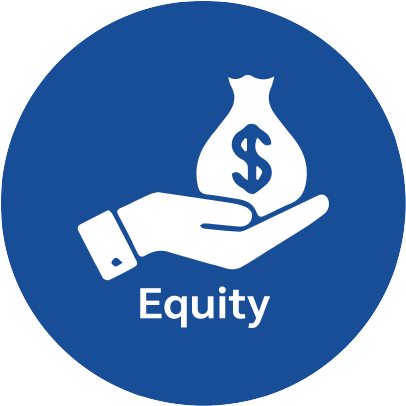5 min read I Date: 27 April 2022
Global Outlook
Global equity markets rebounded in March 2022, despite the continued uncertainties generated by the invasion of Ukraine by Russia. During the month, ASEAN recorded its third consecutive month of gain (1.9%) while the S&P500 and the Nikkei 225 rose by 3.6% and 4.9% respectively. Bonds indicators dropped by -2.1% to -3.0% for the month.
On the monetary policy front, it is likely that the central banks will refocus on the risk to growth, on top of the risks to inflation. The latest U.S. Federal Reserve (Fed) statement reinforced earlier guidance on interest rate trend and that balance shrinkage will start in May 2022 at a run-off rate of USD95 billion per month.
We remained neutral on Asian equities on a 3-month horizon with focus on quality companies with earnings visibility, robust balance sheet, long term winners, market share gainers and with pricing power.
We also remained neutral on equity markets for developed economies.
General outlook of the two capital markets: Fixed Income & Equity
Region: Developed economies
- Our view – least preferred.
- Developed Markets economic fundamentals remained sound with improving employment. There is downside risk to growth & earnings should geopolitical uncertainties persist.
- The Fed reinforced guidance on interest rate trend and signaled balance sheet shrinkage to start in May 2022. Our base case is for 6 hikes over 2022 to 2023.

- Our view – neutral.
- Developed Markets economic fundamentals remained sound with improving employment. There is downside risk to growth & earnings should geopolitical uncertainties persist.
- We remain neutral on U.S., European Union (E.U.) & Japan in the short term on the back of rising rates. We also reduced exposure to expensive growth stocks.
Region: Regional (Asia-Pacific ex-Japan)

- Our view – neutral.
- Pockets of opportunity in local Asian currencies and Chinese credits as yields remain relatively attractive.
- We forecast Asian bonds to provide a return of 1.50% to 2.50% in 2022.

- Our view – neutral.
- Asian economies have started to implement booster shots to preserve the pace of economic re-opening and growth.
- We are diversifying and reducing risks where appropriate. Portfolios are focus on quality companies with earnings visibility, robust balance sheet, market share gainers and with pricing power.
Region: China

- Our view – neutral.
- Net supply of bond in February 2022 dropped to RM632 billion from RMB711 billion the month before. The decline in supply is driven by State-Owned Enterprises (SOEs) and while the private sector saw a small increase of RMB11 billion in February 2022.
- The default rate in February 2022 eased to 0.75% from 0.92% previously driven by SOEs. The private sector default rate edged up to 6.6% from 6.1% the month before.

- Our view – neutral.
- Chinese policymakers announced a USD2.6 trillion infrastructure plan to support economic growth over the medium term. We expect more policy easing to be introduced.
- The manufacturing PMI (Purchasing Managers' Index) for March 2022 dropped to 49.5 from 50.2 while the Non-manufacturing PMI declined to 48.4 from 51.6 previously. The declines reflected the impact of the lockdowns implemented.
Region: Domestic (Malaysia)

- Our view – neutral.
- Bank Negara Malaysia (BNM) maintained the Overnight Policy Rate (OPR) at 1.75% in March 2022. It stressed that the monetary stance will be dependent on new data.
- Portfolio duration is to stay at 1.05x +/1 0.20. The environment provides an opening to trade government bonds for alpha. To participate in primary credit issuances for better yield pick-up.

- Our view – neutral.
- We continue to adopt a balanced approach, with larger tilt to value, and maintain sufficient diversification.
- We prefer consumer discretionary, and commodities but have turned neutral on financials after strong YTD performance. Trimmed expensive Tech.
Our Strategy
- Within Asia, we maintained a balanced preference for equities and bonds. Uncertainty has already led to equity PE multiples compressing, rising volatility, and earnings expectations revised lower. Within bonds, we prefer local and regional to global developed market fixed income. We are mindful of the various risk scenarios that are developing and are focused on ensuring that our portfolio construct has a sensible risk profile.
- We remained neutral on Asian equities over a 3-month horizon. We view that regulatory risk in China has peaked, and meanwhile Chinese policymakers have announced a USD2.6 trillion infrastructure plan. We expect more policy easings to follow. Markets are likely to be focused on quality firms with unique growth drivers, pricing power and reasonable valuations. China and ASEAN offer such ideas that can do well regardless of broad market performance. Our recommended strategic holdings include Principal Asia Pacific Dynamic Income Fund, Principal Asia Titans, Principal Islamic Asia Pacific Dynamic Equity Fund, Principal Asia Pacific Dynamic Multi Asset Fund, Principal ASEAN Total Return Fund,Principal Greater China Equity Fund and Principal Global Technology Fund.
- We would recommend investors to seriously consider the Principal Global Sustainable Growth Fund that focusses on ESG related investments for long term exposure.
- Note that income is integral to a well-diversified portfolio. In short, investors are advised to::
- Be aware of risks to ride out volatilities arising from geopolitical tensions, policy normalisation, inflationary issues and Covid19 variant..
- Focus on quality growth in developed markets and seek value opportunities within Asia Pacific.
- Position for sustainability themes including renewables, alternative energy, and food sustainability.
1. Universal Funds
| Risk Scale | Fund Options | |
|
Low |
Conservative |
• Principal Islamic Money Market Fund |
| Mildly conservative |
• Principal Lifetime Bond Fund |
|
| Moderate |
• Principal Lifetime Balanced Income Fund |
|
| Mildly Aggressive |
• Principal DALI Global Equity Fund |
|
| Aggressive |
• Principal Global Titans Fund |
2. Islamic Funds
| Risk Scale | Fund Options | |
Low High |
Conservative |
• Principal Islamic Money Market Fund |
| Mildly conservative |
• Principal Islamic Lifetime Sukuk Fund |
|
| Moderate |
• Principal Islamic Lifetime Balanced Fund |
|
| Mildly Aggressive |
• Principal DALI Global Equity Fund MYR |
|
| Aggressive |
• Principal Islamic Asia Pacific Dynamic Equity Fund |
3. EPFMIS Universal Funds
| Risk Scale | Fund Options | |
Low High |
Conservative |
• Principal Islamic Money Market Fund |
| Mildly conservative |
• Principal Islamic Lifetime Enhanced Sukuk Fund |
|
| Moderate |
• Principal Islamic Lifetime Balanced Fund |
|
| Mildly Aggressive |
• Principal Asia Pacific Dynamic Income Fund |
|
| Aggressive |
• Principal Greater China Equity Fund |
4. EPFMIS Islamic Funds
| Risk Scale | Fund Options | |
Low High |
Conservative |
• Principal Islamic Money Market Fund |
| Mildly conservative |
• Principal Islamic Lifetime Enhanced Sukuk Fund |
|
| Moderate |
• Principal Islamic Lifetime Balanced Fund |
|
| Mildly Aggressive |
• Principal DALI Asia Pacific Equity Growth Fund |
|
| Aggressive |
• Principal Islamic Asia Pacific Dynamic Equity Fund |
You may obtain a copy of the Prospectus/Information memorandum/Disclosure Document and its Product Highlight Sheet (if any) for the above-mentioned funds at our offices, distributors or our website at www.principal.com.my.
Click here to download the PDF format
Disclaimer:
We have based this document on information obtained from sources we believe to be reliable, but we do not make any representation or warranty nor accept any responsibility or liability as to its accuracy, completeness or correctness. Expressions of opinion contained herein are those of Principal Asset Management Berhad only and are subject to change without notice. This document should not be construed as an offer or a solicitation of an offer to purchase or subscribe or sell Principal Asset Management Berhad’s investment products. Investing involves risk and cost. You should understand the risks involved, compare and consider the fees, charges and costs involved, make your own risk assessment and seek professional advice, where necessary.


